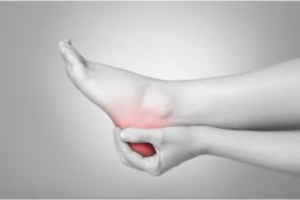
Take for Plantar fasciitis which is heel and foot pain. It is even worse for people who are on their feet all day, to begin with, such as athletes and practitioners in fields like teaching or healthcare. Orthotics may be utilized to help with plantar fasciitis concerns. These commonly provide the users with a relieving effect. I will teach you the answer to your question about how much time It takes.
Understand Plantar Fasciitis
It’s a problem with your feet that arises due to tissue around your heel. This condition happens if the infected area is swollen. This inflammation can result in some of the worst heel discomfort and even pain when rising from extended sitting or standing.
Symptoms of Plantar Fasciitis
- A sudden pain at the heel or towards the arch of the foot
- Increased pain in the morning or after sitting for more extended periods
- Heel inflammation and pain
- Stiffness in the foot
- The Role of Orthotics in Plantar Fasciitis Rehabilitation
What Are Orthotics?
They are insoles that provide extra support and foot alignment. They split up the demand equally to put less pressure on the plantar fascia.
How Do Orthotics Help?
- Arch Support: They give relief and support to the arch, which can help lower the stress on the plantar fascia.
- Heel cushioning: They are designed to deliver added padding to the heel, which may help with pain. Orthotics properly align your feet, keeping you from overloading the planter feet excessively, possibly leading to plantar fasciitis.
- SHOCK ABSORBING: They absorb impact with the ground, helping reduce the pressure on the plantar fascia when walking or running.
Timeline for Healing Plantar Fasciitis with Orthotics
Initial Relief (1-2 Weeks)
After wearing orthotics for the first week or two, many feel relief from pain. This initial relief happens as the orthotics begin to support under that arch and remove partial strain from an inflamed plantar fascia. During this phase, it is crucial to wear orthotics or walking boots whenever a person has pressure on their feet.
Progression Phase (3-6 Weeks)
You will see a significant result between the third and sixth weeks. Inflammation in the plantar fascia starts to go away, so your pain eases off. At this moment, the regular use of orthotics has a key role in combination with other treatments such as stretching exercises or rest. For most people, their morning pain begins to decrease, and their ability to walk or stand for longer periods has remarkably increased with very little discomfort.
Near Complete Recovery (7–12 weeks)
Near-full recovery for many people by week seven through twelve. The orthotics provide support and cushioning to ensure the plantar fascia (among other areas) can finally heal consistently. At this point, the pain may be minor or even absent. Nonetheless, it would help if you continued to use your orthotics so as not to have the problem return (specifically during activities where you are on your feet for a long time or walking).
Long-Term Maintenance
Orthotics help maintain optimal foot alignment and support even after the injury has healed, so continue to use them after recovery. This also helps avoid the return take for plantar fasciitis and other foot problems in the future. Follow-up visits with a medical practitioner will keep your orthotics in tip-top shape and detect any necessary renovations.
Factors That Impact Healing Time
Severity of the Condition
The time taken to heal can depend on how bad the plantar fasciitis was when it started. People with mild symptoms will make quicker recoveries whereas people suffering from chronic or severe plantar fasciitis may take longer to heal.
Regular use of orthotics for plantar fasciitis
Regular wear of orthotics is indispensable for a good recovery. Lack of regular use can extend recovery and limit effectiveness.
Additional Treatments
Take for Plantar Fasciitis Complementary treatments may make you feel better and speed up the healing process, such as stretching exercises to loosen your foot muscles and reduce damage-rest-anti-inflammatory medications. If you avoid paying attention to these additional therapies the recovery period then increases.
Overall Health and Lifestyle
Ultimately, things like weight, activity level, and general health can also make a big difference in how quickly you heal. Following these steps can help in quicker healing, along with staying at an ideal body weight and refraining from activities that put the feet under excess strain.
Tips for Maximizing Recovery
Follow a Routine
Take for Plantar Fasciitis which Develop a routine involving orthotics, stretches, and downtime for your feet. Recovery is about staying consistent.
Stay Active but Cautious
Staying active is important. It would also help you also avoid high-impact activities. Choose very good and slow exercises such as cycling or swimming.
Monitor Your Progress
Recording your pain levels and changes This can keep you motivated and prompt action when your treatment plan needs to be modified.
Consult a Professional
Frequent touchpoints with a healthcare professional can keep you on track. If necessary, find a local healthcare professional with experience in biomechanics and orthoses who can give you feedback on guidance or adjustments to the device.
When to Seek Further Help
Persistent Pain
If you feel that you are still in pain after one week of wearing orthotics, you should visit a medical expert.
Worsening Symptoms
If you experience worsening symptoms even while using orthotics daily, then consult a doctor. This might be an indication of other issues that are remaining to work on.
Additional Symptoms
New symptoms such as numbness, tingling, or severe swelling all warrant a call to your healthcare provider immediately.
Conclusion
Take for Plantar fasciitis may be a crippling condition, but most individuals will see a marked improvement in 4-8 weeks when managed properly with orthotics. This healing can be slow, maintenance may need to continue in the long term, and results will not just pop up immediately. The answer is yes! This requires staying on the band apple as in using treatments that go hand-in-hand with orthotics. Your path of healing is as personal as it is, and it will take time — to be exact, patience. If you comply with the procedures and are proactive about it, plantar fasciitis can be beaten so that all of your daily activities are like absolute heaven.


